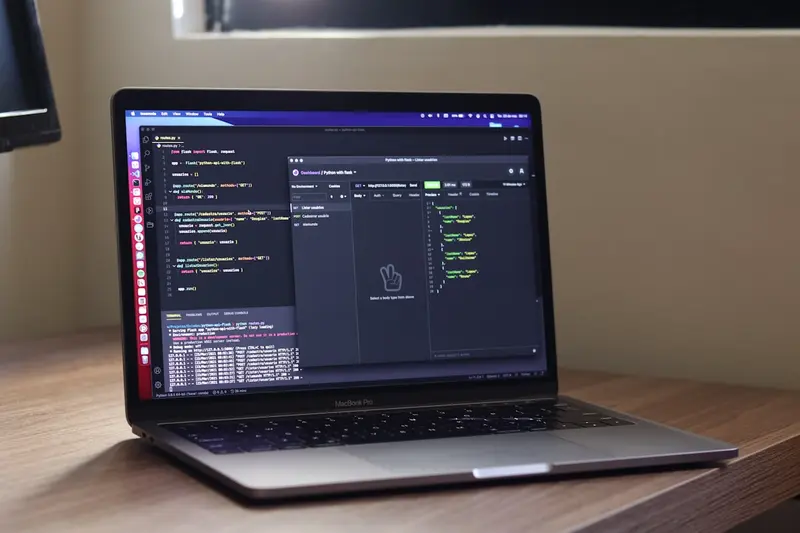☁️ MinIO S3-Compatible Object Storage on AlmaLinux: Your Private Cloud Storage
Welcome to the world of object storage! 🚀 Ready to build your own Amazon S3-compatible storage system? MinIO is like having AWS S3 in your own data center - powerful, scalable, and completely under your control! It’s perfect for storing files, backups, images, videos, and any data you can imagine! 💾✨
🤔 Why is MinIO Important?
MinIO brings enterprise-grade object storage to everyone! 🌟 Here’s why it’s revolutionary:
- 💰 Cost Savings - No cloud storage fees, own your data!
- 🚀 Blazing Fast - Handles 183 GB/s on standard hardware!
- 🔄 S3 Compatible - Works with any S3 application instantly
- 🛡️ Data Protection - Erasure coding keeps data safe
- 📈 Infinitely Scalable - From laptop to petabyte clusters
- 🔒 Enterprise Security - Encryption, versioning, and compliance
Think of MinIO as your personal Amazon S3 - but faster, cheaper, and completely yours! 🏆
🎯 What You Need
Before building your storage empire, ensure you have:
- ✅ AlmaLinux server (8 or 9)
- ✅ Root or sudo access
- ✅ At least 4GB RAM (more for production)
- ✅ 20GB+ disk space for storage
- ✅ Basic terminal skills
- ✅ Enthusiasm to learn! 🎓
📝 Step 1: Installing MinIO - Your Storage Foundation!
Let’s get MinIO up and running! 🏗️
First, download the MinIO binary:
# Download MinIO server binary
wget https://dl.min.io/server/minio/release/linux-amd64/minio
# Make it executable
chmod +x minio
# Move to system location
sudo mv minio /usr/local/bin/
# Verify installation
minio --versionYou should see:
minio version RELEASE.2024-XX-XXNow create a dedicated user for MinIO:
# Create minio user (security best practice!)
sudo useradd -r minio -s /sbin/nologin
# Create data directory
sudo mkdir -p /data/minio
# Set ownership
sudo chown -R minio:minio /data/minio
# Create config directory
sudo mkdir /etc/minio
sudo chown -R minio:minio /etc/minioGreat! MinIO is installed! 🎉
🔧 Step 2: Configuring MinIO - Setting Up Your Storage Server!
Time to configure your object storage server! 🎯
Create environment file for MinIO:
# Create MinIO environment file
sudo nano /etc/default/minioAdd this configuration (customize as needed!):
# Volume(s) to use for MinIO storage
MINIO_VOLUMES="/data/minio"
# Access Key (like AWS Access Key ID)
MINIO_ROOT_USER="minioadmin"
# Secret Key (like AWS Secret Access Key) - CHANGE THIS!
MINIO_ROOT_PASSWORD="changeme123456"
# MinIO server URL for console
MINIO_SERVER_URL="http://your-server-ip:9000"
# Region (optional, defaults to us-east-1)
MINIO_REGION="us-east-1"
# Enable browser/console
MINIO_BROWSER="on"
# Console address
MINIO_CONSOLE_ADDRESS=":9001"⚠️ IMPORTANT: Change MINIO_ROOT_PASSWORD to something secure!
Set proper permissions:
# Secure the configuration
sudo chmod 600 /etc/default/minio
sudo chown minio:minio /etc/default/minio🌟 Step 3: Creating Systemd Service - Making MinIO Persistent!
Let’s make MinIO start automatically! 🚀
Create systemd service file:
# Create service file
sudo nano /etc/systemd/system/minio.serviceAdd this configuration:
[Unit]
Description=MinIO Object Storage Server
Documentation=https://docs.min.io
After=network-online.target
Wants=network-online.target
[Service]
Type=notify
WorkingDirectory=/usr/local/
User=minio
Group=minio
EnvironmentFile=/etc/default/minio
ExecStart=/usr/local/bin/minio server $MINIO_VOLUMES
Restart=always
RestartSec=5
StandardOutput=journal
StandardError=journal
SyslogIdentifier=minio
TimeoutStartSec=0
# Hardening
PrivateTmp=yes
NoNewPrivileges=yes
PrivateDevices=yes
RemoveIPC=yes
ProtectSystem=strict
ReadWritePaths=/data/minio
[Install]
WantedBy=multi-user.targetStart MinIO:
# Reload systemd
sudo systemctl daemon-reload
# Start MinIO
sudo systemctl start minio
# Enable on boot
sudo systemctl enable minio
# Check status
sudo systemctl status minioConfigure firewall:
# Open MinIO ports
sudo firewall-cmd --permanent --add-port=9000/tcp
sudo firewall-cmd --permanent --add-port=9001/tcp
sudo firewall-cmd --reloadVisit http://your-server-ip:9001 - MinIO Console is ready! 🎊
✅ Step 4: Creating Buckets - Your Storage Containers!
Let’s create your first storage bucket! 🪣
Install MinIO Client (mc):
# Download MinIO Client
wget https://dl.min.io/client/mc/release/linux-amd64/mc
# Make executable
chmod +x mc
# Move to system location
sudo mv mc /usr/local/bin/
# Verify
mc --versionConfigure mc to connect to your MinIO:
# Add your MinIO server
mc alias set myminio http://localhost:9000 minioadmin changeme123456
# List buckets (should be empty initially)
mc ls myminioCreate buckets:
# Create a bucket for backups
mc mb myminio/backups
# Create a bucket for media files
mc mb myminio/media
# Create a bucket for documents
mc mb myminio/documents
# List all buckets
mc ls myminioYou’ll see:
[2024-XX-XX 10:00:00 UTC] 0B backups/
[2024-XX-XX 10:00:05 UTC] 0B media/
[2024-XX-XX 10:00:10 UTC] 0B documents/Perfect! Your buckets are ready! 🎯
🔒 Step 5: Setting Up Access Policies - Security First!
Let’s secure your storage with policies! 🛡️
Create a read-only policy:
# Create policy file
nano /tmp/readonly-policy.jsonAdd this policy:
{
"Version": "2012-10-17",
"Statement": [
{
"Effect": "Allow",
"Principal": "*",
"Action": [
"s3:GetObject",
"s3:ListBucket"
],
"Resource": [
"arn:aws:s3:::media/*",
"arn:aws:s3:::media"
]
}
]
}Apply the policy:
# Set public read policy on media bucket
mc anonymous set public myminio/media
# Or use custom policy
mc admin policy add myminio readonly /tmp/readonly-policy.json
# Create a user
mc admin user add myminio john johnspassword
# Attach policy to user
mc admin policy set myminio readonly user=johnCreate access keys for applications:
# Generate access key
mc admin user svcacct add myminio john
# You'll get output like:
# Access Key: AKIAIOSFODNN7EXAMPLE
# Secret Key: wJalrXUtnFEMI/K7MDENG/bPxRfiCYEXAMPLEKEY📤 Step 6: Uploading and Managing Files - Using Your Storage!
Time to use your object storage! 📁
Upload files using mc:
# Upload a single file
mc cp /path/to/file.pdf myminio/documents/
# Upload entire directory
mc cp --recursive /path/to/photos/ myminio/media/
# Mirror a directory (sync)
mc mirror /local/backup/ myminio/backups/
# Check upload
mc ls myminio/documents/Set lifecycle policies:
# Delete old files automatically after 30 days
mc ilm add --expiry-days 30 myminio/backups
# Transition to cheaper storage after 7 days
mc ilm add --transition-days 7 --storage-class COLD myminio/mediaEnable versioning:
# Enable versioning on important bucket
mc version enable myminio/documents
# List versions
mc ls --versions myminio/documents/🎮 Quick Examples
Example 1: Using MinIO with S3 CLI
Use AWS CLI with MinIO:
# Install AWS CLI
sudo dnf install -y awscli
# Configure for MinIO
aws configure --profile minio
# Enter:
# Access Key: minioadmin
# Secret Key: changeme123456
# Region: us-east-1
# Output: json
# Use with MinIO
aws --endpoint-url http://localhost:9000 --profile minio s3 ls
aws --endpoint-url http://localhost:9000 --profile minio s3 cp file.txt s3://backups/Example 2: Python Application Integration
Use MinIO from Python:
# Install: pip install boto3
import boto3
# Connect to MinIO
s3 = boto3.client(
's3',
endpoint_url='http://your-server:9000',
aws_access_key_id='minioadmin',
aws_secret_access_key='changeme123456'
)
# Upload file
s3.upload_file('local-file.jpg', 'media', 'uploaded-file.jpg')
# List objects
response = s3.list_objects_v2(Bucket='media')
for obj in response.get('Contents', []):
print(obj['Key'])Example 3: Distributed MinIO Setup
Create a 4-node cluster for high availability:
# On each node, set environment
sudo nano /etc/default/minio
# Add:
MINIO_VOLUMES="http://node{1...4}.example.com:9000/data/minio"
# Start on all nodes
sudo systemctl start minio
# They'll automatically form a cluster!🚨 Fix Common Problems
Problem 1: Cannot Access Console
Symptom: Can’t reach MinIO console 😰
Fix:
# Check if MinIO is running
sudo systemctl status minio
# Check logs
sudo journalctl -u minio -n 50
# Verify ports are open
sudo firewall-cmd --list-ports
# Test locally
curl http://localhost:9001
# Check console is enabled
grep MINIO_BROWSER /etc/default/minioProblem 2: Permission Denied Errors
Symptom: Can’t write to buckets 🚫
Fix:
# Check directory ownership
ls -la /data/minio/
# Fix permissions
sudo chown -R minio:minio /data/minio
sudo chmod -R 755 /data/minio
# Restart MinIO
sudo systemctl restart minio
# Check SELinux
sudo setenforce 0 # Temporary disable to testProblem 3: Slow Performance
Symptom: Uploads/downloads are slow 🐌
Fix:
# Use multiple drives for better performance
# Edit /etc/default/minio:
MINIO_VOLUMES="/data/minio1 /data/minio2 /data/minio3 /data/minio4"
# Enable caching
mc admin config set myminio cache drives="/cache1,/cache2"
# Optimize kernel parameters
echo "net.core.rmem_max = 134217728" | sudo tee -a /etc/sysctl.conf
echo "net.core.wmem_max = 134217728" | sudo tee -a /etc/sysctl.conf
sudo sysctl -p📋 Simple Commands Summary
| Command | What It Does | When to Use |
|---|---|---|
mc alias set | Configure connection | Initial setup |
mc mb | Make bucket | Create storage |
mc cp | Copy files | Upload data |
mc mirror | Sync directories | Backup |
mc ls | List objects | Browse storage |
mc rm | Remove objects | Delete files |
mc admin info | Server info | Check status |
mc admin user add | Create user | Access control |
mc version enable | Enable versioning | Data protection |
mc ilm add | Lifecycle rules | Automate cleanup |
💡 Tips for Success
🚀 Performance Optimization
Make MinIO super fast:
# Use NVMe SSDs for best performance
# Mount with optimal settings
sudo mount -o noatime,nodiratime /dev/nvme0n1 /data/minio
# Use erasure coding for reliability
# 4 drives minimum for EC:2 (can lose 2 drives)
MINIO_VOLUMES="http://server{1...4}/data{1...4}"
# Enable kernel optimizations
echo "vm.swappiness = 1" | sudo tee -a /etc/sysctl.conf
sudo sysctl -p🔒 Security Best Practices
Keep your storage ultra-secure:
- Use TLS/SSL - Encrypt all connections! 🔐
- Strong passwords - Minimum 16 characters! 💪
- Regular key rotation - Change credentials monthly! 🔄
- Enable audit logs - Track all access! 📝
- Bucket encryption - Encrypt data at rest! 🛡️
# Enable encryption
mc encrypt set sse-s3 myminio/sensitive
# Enable audit logs
mc admin config set myminio audit_webhook:primary endpoint="http://splunk:8088"📊 Monitoring Your Storage
Keep an eye on everything:
# Real-time metrics
mc admin info myminio
# Prometheus metrics
curl http://localhost:9000/minio/v2/metrics/cluster
# Disk usage
mc du myminio
# Watch events
mc admin trace myminio🏆 What You Learned
You’re now a MinIO expert! 🎓 You’ve successfully:
- ✅ Installed MinIO object storage
- ✅ Configured S3-compatible server
- ✅ Created and managed buckets
- ✅ Set up security policies
- ✅ Integrated with applications
- ✅ Learned troubleshooting
- ✅ Mastered MinIO Client (mc)
You have your own private cloud storage! ☁️
🎯 Why This Matters
MinIO gives you incredible capabilities! With your object storage, you can:
- 💾 Replace expensive cloud storage - Save thousands per month!
- 🎬 Stream media files - Build your own Netflix!
- 🗄️ Archive data forever - Immutable backups!
- 🚀 Scale infinitely - From GB to PB!
- 🤖 Power AI/ML workloads - Store training data!
You’re not just storing files - you’re building a foundation for modern applications, data lakes, and cloud-native infrastructure! Your data is now yours, scalable, and S3-compatible! 🌟
Keep building, keep storing, and remember - with MinIO, the sky’s the limit! ⭐
May your storage be infinite and your costs be minimal! 🚀☁️🙌




